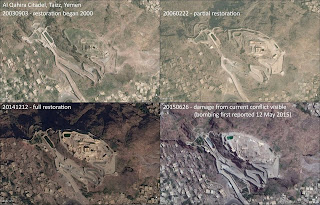Samer Abdel Ghafour is a Syrian cultural heritage specialist whose professional experience includes working both as a museum curator and a field director and chief conservator for archaeological missions in Syria. Samer is currently completing his PhD at Sapienza University of Rome in Philology and History of the Ancient World.
What were your motivations behind enrolling in the ARCA post-graduate program? What do you value about the program as a whole?
Each course offered by the ARCA program expands academic knowledge by tackling topics from different angles, while the experience as a whole opens gates and provides networking opportunities. Through the program, I have been introduced to a community of specialists whose work is interrelated with ARCA, its mission, program, academic publications, and journal of art crime. The specialized courses offered develop a platform for engagement that addresses ten different elements, ten domains, ten fields. The specificity of the program supports research and engagement with varied topics that otherwise receive little academic attention and range from sites management, to the conservation of mosaics.
How does your academic and professional background correlate with the work you are doing in the program?
In 2011, Syria experienced a whirlwind of lawlessness on all levels, including irreversible damage to cultural heritage. Following the looting of open archaeological sites, the illicit trafficking of looted objects, and the destruction of historic monuments and museums, both Syrian and international experts organized several initiatives to mitigate damage to the best of our ability. Improving academic knowledge through participation in this and other programs is an essential part of our commitment to save and protect. In Dick Ellis’ course on Policing, I studied art in the black market and in organized crime, researching methods of tracing illicit trafficking. In Art and Heritage Law with Duncan Chappell, we became better equipped to apply both national and international law, and following Marc Balcells’ Criminology course, I now feel more comfortable addressing organised crime. As crime itself is getting stronger, it is important that we too strengthen ourselves and our knowledge. Amidst the chaos in Syria, we are preparing for the aftermath, trying to maintain stability through networking, documenting damage, and collecting data for analysis.
Networking is a vital component in your current work, correct?
Yes, I use social media as a platform that provides information for the public, not just academics. In July 2011, I attended an international symposium in Berlin in which archaeologists digging in Syria wanted to know whether or not they could continue their work. Relationships can be ruined by the current inability to dig in Syria, but the loss of these connections can be avoided by communication through a free platform in which awareness is raised and accumulated knowledge is disseminated to whoever is interested. Founding the
Archaeology Information Network has not only provided an opportunity to raise cultural heritage awareness, it has also created a space for the collection of data about current damage and has highlighted the good work of others who are invested in cultural heritage protection. I also maintain a Twitter account for those that want to follow my work at
@SamAbdelGhafour
What has been your favorite thing about the program? About living in Amelia?
I value the conference itself being held in the middle of the program- it was like a shot of espresso in the middle of the day. The experience solidified and contextualized a lot of the work we were doing in the classroom, providing ARCA students with the opportunity to take the next steps in our respective fields, to network, and to build solid connections and foundations.
As far as Amelia goes, hosting the program here is like combining American academia with an Italian spirit. If our work here is the body and Amelia contributes to the spirit, the two form a living entity, imbued with a depth of historical value from the surrounding environment. The walls of Amelia do not separate it from the natural landscape and cultural heritage surrounding it. These walls, which historically served as means of defence for Amelia, now play the role of connecting the program to the city and its vivid history. It is a striking example and experience of intercultural engagement.
Since completing the ARCA summer coursework, what have you been doing this Autumn?
I also have a recently updated position with
IIMAS – The International Institute for Mesopotamian Area Studies as an Associate Director for Institutional Communications. Thirdly, I am also working to develop a project a little closer to my home, ARCA in the Levant, a program to bring ARCA's methodology closer to conflict zones.
-------
ARCA is accepting applications for the 2016 Postgraduate Certificate Program in Art Crime and Cultural Heritage Protection. For more information on how to apply,
please click here.
 Carabinieri,Carabinieri Art Squad,Carabinieri Tutela Patrimonio Culturale,recovered stolen art
Carabinieri,Carabinieri Art Squad,Carabinieri Tutela Patrimonio Culturale,recovered stolen art
 No comments
No comments
 Carabinieri,Carabinieri Art Squad,Carabinieri Tutela Patrimonio Culturale,recovered stolen art
Carabinieri,Carabinieri Art Squad,Carabinieri Tutela Patrimonio Culturale,recovered stolen art
 No comments
No comments

























